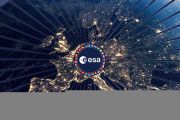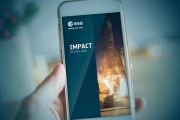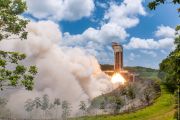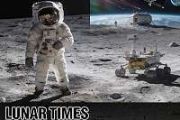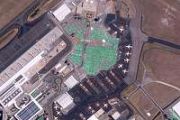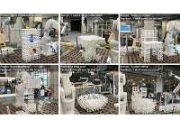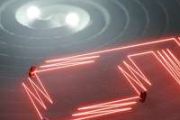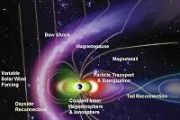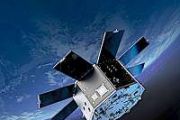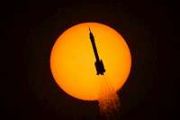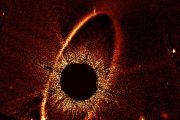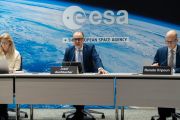
Copernical Team
Bennu and some of the biggest science questions of our generation
 This week, NASA's OSIRIS-REx science team is meeting as a whole for the last time before the sample of asteroid Bennu arrives on Earth. This occasion marks the last chance for the group to convene to make sure team members, lab facilities, and sample-analysis techniques are working as expected and ready for the delivery of Bennu's rocks this September.
In the post below, Jason Dworkin, OSI
This week, NASA's OSIRIS-REx science team is meeting as a whole for the last time before the sample of asteroid Bennu arrives on Earth. This occasion marks the last chance for the group to convene to make sure team members, lab facilities, and sample-analysis techniques are working as expected and ready for the delivery of Bennu's rocks this September.
In the post below, Jason Dworkin, OSI Space Hero and Partners Launch Innovative Space Village, Boosting Space Tourism
 In a major development in space tourism and entertainment, Space Hero, in partnership with the Laboratory for Visionary Architecture (LAVA) and One Digital Entertainment, has announced the ambitious Space Village project. This project involves the creation of 10 futuristic space-themed landmarks in different locations worldwide, providing unique attractions for space enthusiasts and the general
In a major development in space tourism and entertainment, Space Hero, in partnership with the Laboratory for Visionary Architecture (LAVA) and One Digital Entertainment, has announced the ambitious Space Village project. This project involves the creation of 10 futuristic space-themed landmarks in different locations worldwide, providing unique attractions for space enthusiasts and the general Boost for the quantum internet
 Quantum networks connect quantum processors or quantum sensors with each other. This allows tap-proof communication and high-performance distributed sensor networks. Between network nodes, quantum information is exchanged by photons that travel through optical waveguides. Over long distances, however, the likelihood of photons being lost increases dramatically.
As quantum information canno
Quantum networks connect quantum processors or quantum sensors with each other. This allows tap-proof communication and high-performance distributed sensor networks. Between network nodes, quantum information is exchanged by photons that travel through optical waveguides. Over long distances, however, the likelihood of photons being lost increases dramatically.
As quantum information canno South Korea launches homegrown rocket after delay
 South Korea launched its homegrown Nuri rocket on Thursday, officials said, a day after it was forced to postpone due to a technical glitch just hours before lift-off.
It marks the third launch of the Nuri, which successfully put test satellites into orbit last year after a failed 2021 attempt saw the rocket's third-stage engine burn out too early.
Wednesday's launch was called off over
South Korea launched its homegrown Nuri rocket on Thursday, officials said, a day after it was forced to postpone due to a technical glitch just hours before lift-off.
It marks the third launch of the Nuri, which successfully put test satellites into orbit last year after a failed 2021 attempt saw the rocket's third-stage engine burn out too early.
Wednesday's launch was called off over An improved view of global sea ice

Earth’s declining ice is without a doubt one of the clearest signs of climate change. A new high-resolution sea-ice concentration data record has just been released as part of ESA’s Climate Change Initiative – providing new insights of sea ice concentration across the globe.
LIGO Ready to Explore Secrets of the Universe
 Today, the LIGO-Virgo-KAGRA (LVK) collaboration begins a new observing run with upgraded instruments and other improvements to boost the search for gravitational waves, or ripples in space-time, generated by colliding black holes and other extreme cosmic events. The LVK collaboration consists of scientists across the globe who use a network of gravitational-wave observatories-LIGO in the United
Today, the LIGO-Virgo-KAGRA (LVK) collaboration begins a new observing run with upgraded instruments and other improvements to boost the search for gravitational waves, or ripples in space-time, generated by colliding black holes and other extreme cosmic events. The LVK collaboration consists of scientists across the globe who use a network of gravitational-wave observatories-LIGO in the United Raytheon Technologies and Vista bring LuxStream Unlimited Data plan to customers
 Raytheon Technologies' (NYSE: RTX) Collins Aerospace business has announced plans to bring unlimited data to the customers of Vista, a leading private aviation group. Using Collins' LuxStream, which runs exclusively on the SES's high-throughput satellite (HTS) network, Vista customers can now enjoy fast, reliable, unlimited internet access for the duration of their flights.
Since 2019, Vis
Raytheon Technologies' (NYSE: RTX) Collins Aerospace business has announced plans to bring unlimited data to the customers of Vista, a leading private aviation group. Using Collins' LuxStream, which runs exclusively on the SES's high-throughput satellite (HTS) network, Vista customers can now enjoy fast, reliable, unlimited internet access for the duration of their flights.
Since 2019, Vis Hyperscale satellite ground station to be built by Arctic Space Technologies for OneWeb
 Arctic Space Technologies, an eco-friendly and innovative provider of ground segments, and OneWeb, a low Earth orbit (LEO) satellite communications firm, have made significant progress on the OneWeb Satellite Network Portal (SNP). Located at the Arctic Space Technologies' Space Center in Pitea, the SNP is a massive satellite ground station installation.
Following a bilateral agreement in D
Arctic Space Technologies, an eco-friendly and innovative provider of ground segments, and OneWeb, a low Earth orbit (LEO) satellite communications firm, have made significant progress on the OneWeb Satellite Network Portal (SNP). Located at the Arctic Space Technologies' Space Center in Pitea, the SNP is a massive satellite ground station installation.
Following a bilateral agreement in D Iridium Edge Solar Integrates with Laird Connectivity Sensors to Expand Remote IoT Operations
 Iridium Communications Inc. (NASDAQ: IRDM) is proud to announce that it has partnered with Laird Connectivity, a global leader in wireless technology, to integrate their low-powered sensors with the self-charging Iridium Edge Solar. Laird Connectivity's Sentrius BT610 I/O and BT510+ IoT sensors connect to the Iridium Edge Solar over Bluetooth Low Energy (LE), adding a wealth of new capabilities
Iridium Communications Inc. (NASDAQ: IRDM) is proud to announce that it has partnered with Laird Connectivity, a global leader in wireless technology, to integrate their low-powered sensors with the self-charging Iridium Edge Solar. Laird Connectivity's Sentrius BT610 I/O and BT510+ IoT sensors connect to the Iridium Edge Solar over Bluetooth Low Energy (LE), adding a wealth of new capabilities BlackSky and Spire create commercial, real-time AI-driven maritime custody service
 BlackSky Technology Inc. (NYSE: BKSY) and Spire Global, Inc. (NYSE: SPIR) have teamed up to create a real-time, commercially available Maritime Custody Service (MCS) that can automatically detect, identify and track more than 270 thousand vessels worldwide in open water, along rivers and canals, and while docked at port.
"BlackSky and Spire have developed a very cost-effective and flexible
BlackSky Technology Inc. (NYSE: BKSY) and Spire Global, Inc. (NYSE: SPIR) have teamed up to create a real-time, commercially available Maritime Custody Service (MCS) that can automatically detect, identify and track more than 270 thousand vessels worldwide in open water, along rivers and canals, and while docked at port.
"BlackSky and Spire have developed a very cost-effective and flexible 





